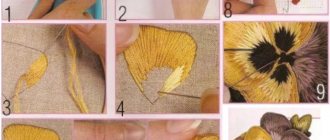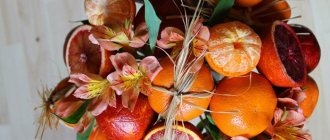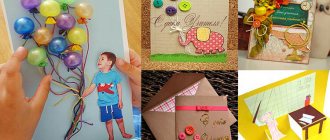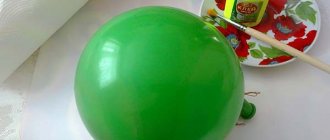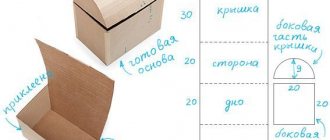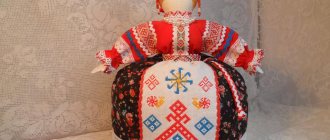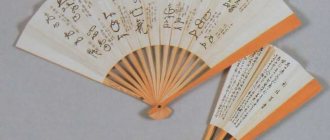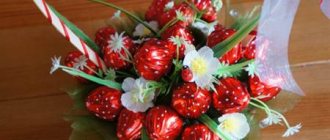A wedding is an important event in the life of any family. The wedding day is remembered by the couple for a long time, so it is important to prepare every detail in advance. If lovers follow traditions, then they take especially long and carefully in choosing a wedding towel for the loaf. You should also decide in advance which traditions with the wedding loaf will be followed and what new trends the young couple wants to apply in their wedding.
Traditions and their role at the celebration
All nations have their own traditions and rituals filled with symbolism. Over time, traditions changed. But there are basic ones that are the most significant and popular.
- Parental blessing. She has many options. The parents of the bride and groom bless the couple to create a new family and give verbal guidance.
- Meeting with a loaf of bread. Parents meet with a loaf of bread in their hands, inviting the couple to break off a piece. The one whose piece is larger will take the place of the head of the family. Read more about this here.
- Removing the veil. Signifies the acceptance of a new family member (acceptance of the bride). Everything basically happens in a playful way.
- Dance of the bride with her father. Here you can get ideas on how to make dancing with your parent even more memorable.
Traditions unite families, allow them to find strength in communication between generations, give a feeling of reliability, and show that a couple belongs to a certain nation or social class.
Interesting!
Meaning, symbolism, origin
The cult of bread and the special attachment of people to grain has created a wedding tradition that involves a loaf of bread. Therefore, this element has long been used at weddings. The loaf symbolizes wealth and fertility. The loaf should be round. In this case, the young family receives a blessing for a life of abundance.
The newlyweds were greeted with a loaf of bread after the wedding (the bread was eaten from the middle, this is symbolic, because it resembles the origin of life). After the couple had tasted the bread, the loaf was offered to relatives and guests, who could also try it. Anyone could taste the loaf and give something in return (make a present for the young people).
All guests receive their own piece of loaf, which they can share with their family at home. Everyone who tries a loaf gets good luck (especially in new business, road or travel). Loaf decorations are distributed among unmarried girls, thereby wishing them happiness in their personal lives and a speedy wedding.
How to make a wedding towel for a loaf - the diagram below shows:
History and use
A towel is a mandatory attribute of a wedding. For a traditional wedding, several types are required: a parental blessing, a wedding towel under a loaf, for tying the hands of the newlyweds, for the bride, for decorating the entrance to the house, for table decoration.
The wedding loaf is served on a hospitable towel. This is the second canvas that is used for newlyweds. The wedding towel for the loaf is chosen to be the brightest one, where ornaments and birds in a pair should be embroidered. Birds mean family happiness, love fidelity. Wishes are embroidered - inscriptions with parting words for a happy life.
The towel has been used since pagan times, so this wedding attribute has a long history. It was believed that this was an intermediary between man and higher powers.
After the wedding, the newlyweds are greeted by their parents. The couple arrives home (or to the place where the event will be celebrated) and the parents present the children with a loaf of bread. A wedding towel for a loaf is decorated with a pair of birds, flowers, wishes for the newlyweds (“For happiness”, “Love and prosperity”, etc.), a tree of life, grapes, viburnum, oak, poppy, lilies (in buds), roses, flower wreaths, swallow, firebird, peacock, crown.
The tree depicts female and male figures (triangles, squares). Branches leading upward mean living relatives. Branches lowered down represent relatives who have passed on to another world.
From the inside out, the threads should not be allowed to cross. This side is neat because... protects the family from outside interference.
The loaf has been revered for many centuries, so it is the most important attribute of a wedding and is always rich in ornaments. A single piece of fabric is selected for it, without cuts, with processed edges. Since the middle of the last century, wedding rings have been embroidered on towels.
Expert advice! If the towel is embroidered in a good mood, then the couple will have a joyful and prosperous family life. Therefore, it is important to decide in advance who will manufacture it.
There are several options:
- created by the bride;
- a linen is used that is passed down from generation to generation;
- custom embroidered;
- ready-made store product.
Every detail is important: from the emotions with which the drawing was made to the thoughts of the needlewoman. If the product is bought ready-made, then its appearance will tell about the quality of the product. Whether to buy a store towel is up to the couple to decide. Does the bride and groom like him in all respects? Or are there any doubts? It should evoke only positive emotions and a pleasant reaction, then it will fulfill its function.
Interesting!
Cross stitch patterns for towels
Previously, several towels were embroidered for a wedding: two for matchmakers, one for a wedding loaf, two more towels for witnesses and one for an icon. Nowadays, only one towel is used for weddings: it is laid under the feet of the future newlyweds during registration. Usually the bride embroiders the towel herself.
Materials for making a towel:
- You can use special fabric for cross stitch. It is sold in handicraft stores. The sizes come in a wide variety - it depends on the future pattern, although they usually adhere to the standard: 2.5 meters in length and 40-50 cm in width.
- If it is not possible to purchase such fabric, then you can use a waffle towel, linen, calico, pre-hemmed.
- Embroidery floss threads. Traditional embroidery colors are red and black. Although it is quite possible to use other colors.
Before you start embroidering, prepare your materials and pattern
A towel for a wedding consists of part of the groom and part of the bride. The groom's part is embroidered before the wedding.
Related article: Replacing a lock on a metal door: step-by-step instructions
Sequence of work:
- The tree of the family, birds, and flowers around it are embroidered first.
- Congratulations to the bride and groom are the second part of the job. Usually in wishes they write “Advice and love”, “For happiness”, etc.
- The last stage will be the embroidery of beregins and a wreath with the initials of the newlyweds.
The edge of the towel is embroidered first - it can be all kinds of borders, tassels of ribbons, fringe, lace.
Then we begin to embroider the tree of the family, alternating it with flowers or birds, and last we embroider a ring with coastlines and initials.
When creating a diagram with your own hands, you can use the Paint program, it is convenient to fill the space with crosses.
Interesting video: how to embroider fabric yourself
If the bride decides to embroider a towel on her own, it is important to learn in advance about the features of embroidery, the intricacies of creating the product, and popular mistakes made by needlewomen. This will allow you to choose the right pattern, fabric, threads, embroidery technique, and product size.
It is also important to know how to embroider patterns, what the back of a towel should be like so that it looks perfect. You can learn from your experiences and make mistakes. Or you can watch a video several times about how experienced needlewomen embroider products. And create a towel for a loaf of bread with your own hands.
Without errors and with a perfect backside:
Chic wedding towels for a loaf can be made using the diagram below:
Details: cross stitch pattern for a towel (photo examples)
The best posts
- Beautiful DIY headband
- Bathroom: how to organize storage so you don’t have to clean it every day?
- Patchwork ideas for inspiration: photos, new items in patchwork and quilting, DIY New Year's ideas for the home, video instructions
- Recommendations: how to install a lock on an interior door
- We give the facade of the house a natural look with the help of marble chips
- Nuances of a circular saw device
- What to give your mom for her birthday with her own hands: the best ideas with photos
- Features of creating sliding doors
Related article: Girlish grapes on the balcony: growing technology (photo)
Tips and tricks for use
And a few more rules for embroidering a wedding towel.
- You should not throw away a towel from a loaf, nor should you give it as a gift. This can destroy family relationships and there will be no happiness in the family. The towel must be stored carefully (just as a couple treats their family).
- The towel should not consist of several pieces (only a single piece).
- It is forbidden to embroider horizontal lines above the top of the pattern - this provokes divorce and childlessness.
- Always be hands-on before embroidering the fabric (needlewomen note that this eliminates negative thoughts).
- Threads made of silk and wool are suitable for towels (only natural ones, it is better to avoid artificial ones).
- Thursday is an ideal day for embroidery; it is better to do needlework in the morning. The front side and back should be the same, or the back should be neat. This will allow you to find harmony between the material and spiritual world.
- There should be no patterns in the center (middle) of the towel: the priority is the space and emptiness of the “white sheet”.
- You should embroider only those designs that the bride likes. If a particular pattern does not bring positive emotions, you should replace it with another.
- A wedding towel is kept by a married couple all their lives and then passed on to their children, who use it at their wedding. This tradition inspires many brides to create towels with original hand embroidery.
The loaf on a beautiful towel becomes even tastier, and the impressions of the event remain only positive. And photographs from the scene of the event will give a sea of pleasant memories that the couple will keep in their memory for a long time.
Olesya Tregubova
Wedding planner, wedding blog author
Previous article
What do wedding customs, traditions, rituals and their modern interpretations mean?
Next article
Rules for embroidering a wedding towel
- Choosing fabric. You need to take a special towel cloth. Its width is not 1 - 1.5 m, but 30-40 cm. The towel cannot be hemmed along the long edge. Fabric can only be cut crosswise. The width is initially made on a loom the same as required for a towel.
- The length of the product is equal to the width multiplied by seven. If the weft size is 30 cm, then ask to sell you a piece of 210 cm. Ideally, this should be the so-called “uniform” canvas, but regular canvas No. 14 or No. 16 can also be used.
- Cuts of the short ends can be processed by decorating them with fringe, ready-made or knitted lace.
- Ancient towels were embroidered using different techniques. Their combination in one product was called the “towel seam”. From the last third of the nineteenth century onwards, the "cross" was generally used.
- A wedding towel has special requirements for the quality of the reverse side. As with any embroidery, there should be no knots here. Moreover, a “perfect underside” is required. To do this, the sequence of making crosses when embroidering is calculated in such a way that on the reverse side all stitches are either only vertical or only horizontal. Any confusion will lead to troubles in family life.
- Compositionally, embroidery consists of three tiers: past, present and future. A deeper meaning: the world of the dead, the world of people and the world of gods (nav, yav and prav in Slavic mythology). The lower tier must be “closed” by a horizontal line of the ornament. The top two remain “open”. The third tier has not a linear, but a pyramidal structure.
- The middle of the towel is not sewn up. You cannot stand on embroidery with your feet. In general, it is advisable to stand on the towel only on your knees. Unfortunately, this tradition has been lost, and in modern conditions it is quite difficult to adhere to it.
- The right end is embroidered first, on the side of which the groom should stand. A small mark is placed on it. On the left, female end, the same colors are used, but in lighter and cooler shades. During the ceremony, everyone must stand at their own end. Otherwise, a woman will have to bear a man’s work all her life. Both ends should have the same symmetrical pattern and be a continuation of each other. We embroider from “coast to coast” - along the edge and to the very edge, as much as possible.
- Among the symbols there must be a family tree. It is also good to embroider birds, crowned wreaths, roses, lilies, oak, hops, grapes. Depending on what you personally like or need. The ornament on a towel is like a wish on a postcard, only encrypted.
If you want to learn how to embroider wedding towels with your own hands, but don’t know where to start, watch this video:

